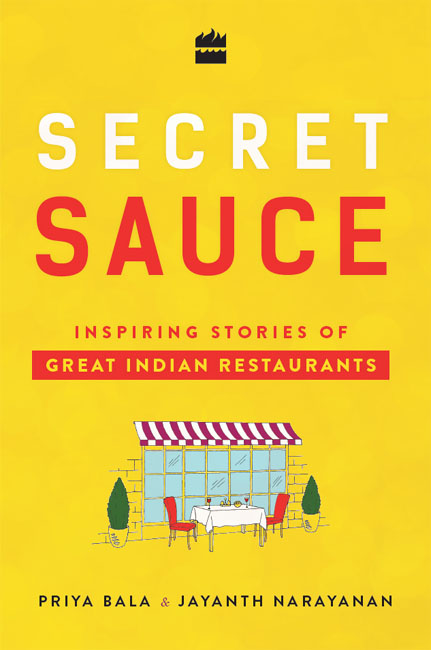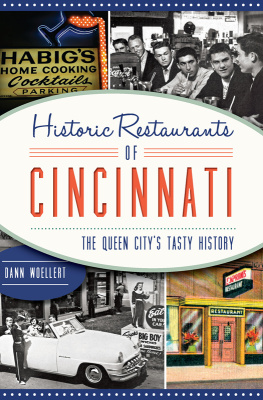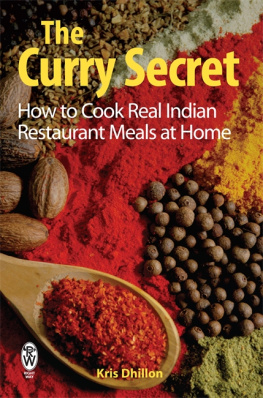Table of Contents

SECRET
SAUCE
INSPIRINGS TORIESOF
GREAT INDIAN REST AURANTS
PRIYA BALA
&
JAYANTH NARAYANAN

For
Padmini and Rohan
PB
The restaurateurs who have been pioneers
JN
Contents
THE ORIGINS OF this book lie in our previous work, Start Up Your Restaurant, the research for which involved scouring the dining-out landscape for businesses that exemplify, for the aspiring restaurateur, ways to achieve success in a notoriously fickle industry. Although the more frequently asked question today is Where are we eating/ordering from? than What are we eating? and even though the decline in cooking at home has led to increased dependence on restaurants and made dining out a favoured leisure activity, the casualty rate in the food services business is high.
And yet, in this punishing environment, like persistent plants that flourish on unyielding land, we come across remarkable restaurants across India that have endured, by achieving and maintaining high standards of culinary excellence and/or becoming commercially successful. The stories of these restaurants, we were convinced, needed to be told, celebrated, and perhaps, even emulated. It is this conviction that served as the inspiration for this book.
Given the alarmingly high shut-down rate of restaurants, those that have endured for even a couple of decades call for applause. Imagine then, the scale of achievement when a restaurant has been in business for a century and more. The history of the restaurant business in India is somewhat lost in the smoky haze of time. This shouldnt be surprising, for this is, even today, an unorganized industry. In France, for example, a country which prides itself on preserving its culinary heritage, theres fogginess on how the very first restaurant came about. For a long time, it was believed that a certain Monsieur Boulanger opened Pariss first restaurant in the year 1765, and that it sported the sign Boulanger dbite des restaurants divins (Boulanger sells restoratives fit for the gods). It was only recently that an expert in European history debunked this story, saying no such person existed. In any case, it was the first establishment to use the word restaurant, a place that offered restoratives or sustenance.
In India, we have no such story authentic or apocryphal of how the first modern restaurant came about. What we do know with some certainty is that they took shape around the late nineteenth century. Leopold Caf & Bar, now a landmark in Mumbai as one of the targets of the dastardly 26 November 2011 terrorist attacks, opened in 1871 originally as a store, then metamorphosed into a restaurant. Today, almost a century and a half later, it continues to be hugely popular and customers frequently wait in a queue before finding seating. Whether youre a restaurateur or a food lover, wouldnt you want to know the secret behind Leopolds longevity and success? We certainly wanted to and, as youll read in the following pages, its an engaging account.
There are other similar restaurants which opened at the turn of the century in India and continue to be fully operational and profitable, and became landmarks in their territories. Today, their iconic status and sheer nostalgia is sufficient to drive business. That doesnt however allow Bengalurus much-loved MTR, which opened in 1924 and is credited with inventing the rava idli, to sit back and rely on past glory. Its third-generation owners are on an expansion spree, even outside India. The MTR story encapsulates how a pre-Independence era eatery has made a smooth transition to the age of the millennials. In Bengaluru, restaurants of a similar vintage, such as Vidyarthi Bhavan preferred haunt of Karnatakas chief ministers often topping the best dosa maker in the city lists, have fascinating stories around them.
Similar century-old eateries are paeans also to a pioneering spirit. Those early restaurateurs ventured into a realm which promised no glamour or celebrity status as is the case today, when I want to have my own restaurant is a common refrain. Delhis post-Partition turmoil saw Kundal Lal Gujral, a specialist in tandoori fare in Peshawar, crossing over to create butter chicken at Moti Mahal, a brand that continues to endure despite upheavals.
Meanwhile in Kolkata and Darjeeling, some decades before Independence, elegant tea rooms were set up to cater to the sahibs and memsaabs of the British Raj Flurys on Kolkatas Park Street and Glenarys in Darjeelings Chauk Bazaar find a mention in every tour guide to these cities. Not everything in those days was about sophistication and West-influenced patisserie though. In Delhis bustling Jama Masjid area, royal cuisine was being served to the common man at Karim, by a descendant of the cooks of former Mughal emperors. What inspired those early restaurateurs to enter the food business and how did they manage to pass the baton on to the generations that followed or to new owners? These are questions that intrigued us and our discoveries are chronicled here.
The restaurants that opened for business pre- and just after Independence brought a unique vintage and entrepreneurial spirit to the Indian food services business. But another big surge happened in post-liberalization India. As more and more Indians became enamoured with fine dining, the urban middle-class, armed with disposable incomes, decided that food was not mere sustenance it could be a leisure activity, even an amusing diversion. The five-star hotels were on hand to cater to such pleasure-seekers. Bukhara at the ITC Maurya in Delhi soon became the capitals most famous dining room. Down south, Karavalli at Bengalurus Gateway Hotel, introduced what was then a revolutionary concept of home-style coastal cooking in a five-star setting. Both these restaurants have been in business for more than a quarter of a century and have won huge accolades for their culinary excellence. Few cities in other parts of the world have hotels that are particularly known for their food. India bucks the trend and these trend-setters have their own tales to tell. Outside the rarefied environs of luxury hotels, in a charmingly rustic setting, there is Vishalla, in Ahmedabad an outlier for forty years. This was one mans dream that became an anti-urban idyll and went on to become successful against all odds.
There were other dynamic entrepreneurs with a love and knowledge of food who believed that great food and good times were not the exclusive preserve of five-star hotels. Armed with sheer passion the venture capital investments would come much later they dived in, changing forever the way the urban population eats and spends its leisure time. A.D. Singh created Just Desserts in Mumbai, a hangout for young people, before going on to build Olive Bar & Kitchen and later, provided a platform for the entrepreneurial ambitions of the talented chef Manu Chandra. Riyaaz Amlani, meanwhile, began with the cool caf, Mocha, and later created other restaurant formats, including the hangout-cum-workspace, Social. A food pro, Sanjay Mahtani and a business expert, Jay Singh, came together to form JSM, testing and succeeding with Hard Rock Caf under a franchise model and created upscale dine-out brands such as Shiro.
Building large restaurant businesses alongside these young turks were ventures such as Speciality, Anjan Chatterjees company which gave us Mainland China and Oh! Calcutta. Soon, Barbeque Nation arrived on the scene and grew even as it tasted success, having tapped into the Indian customers penchant for eat-all-you-want offerings. How did these restaurant businesses come to gauge and understand the Indian customers tastes and willingness to spend which even professional market surveys find difficult to pin down and create products and experiences of aspirational value? The stories of these mega Indian restaurant businesses set out to answer this question that every restaurateur asks.








